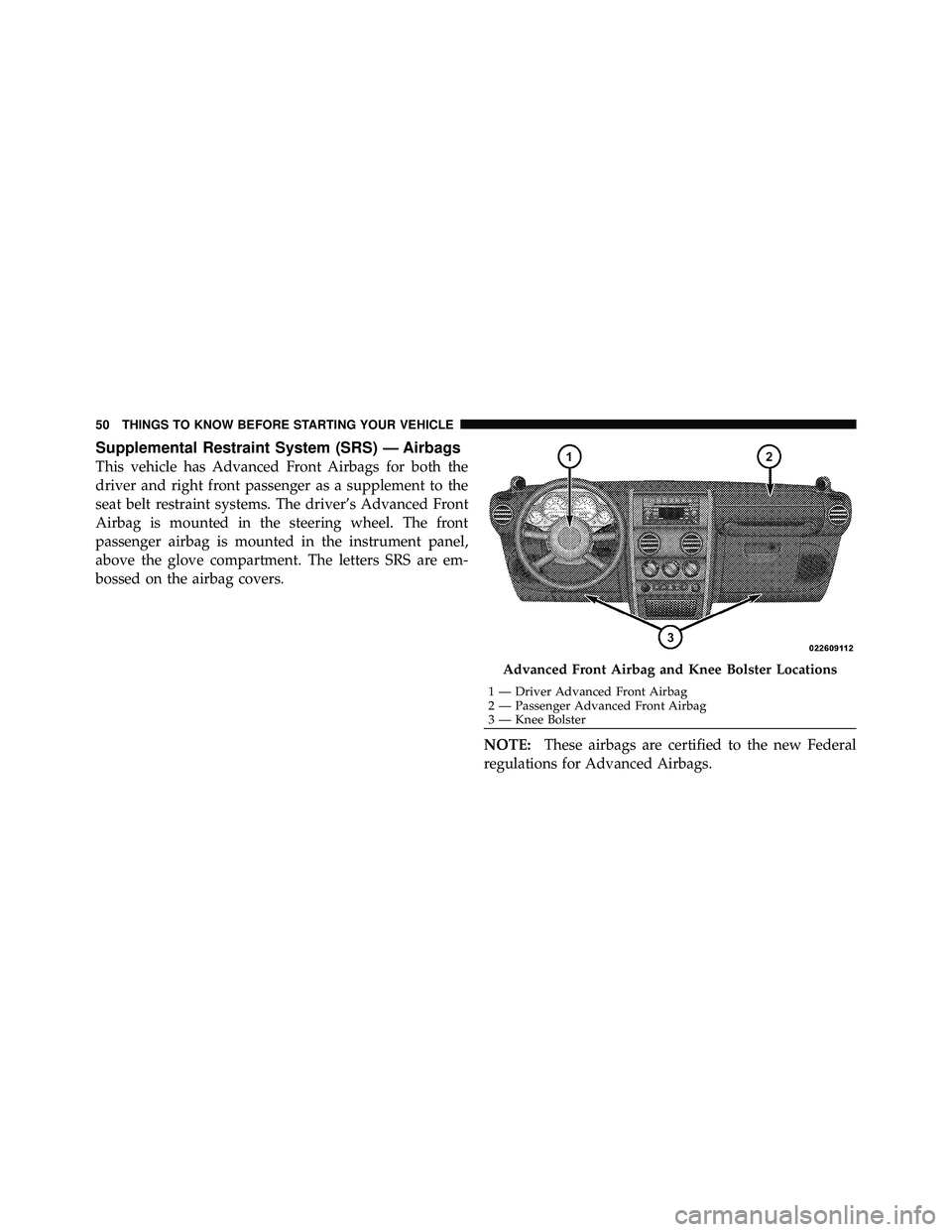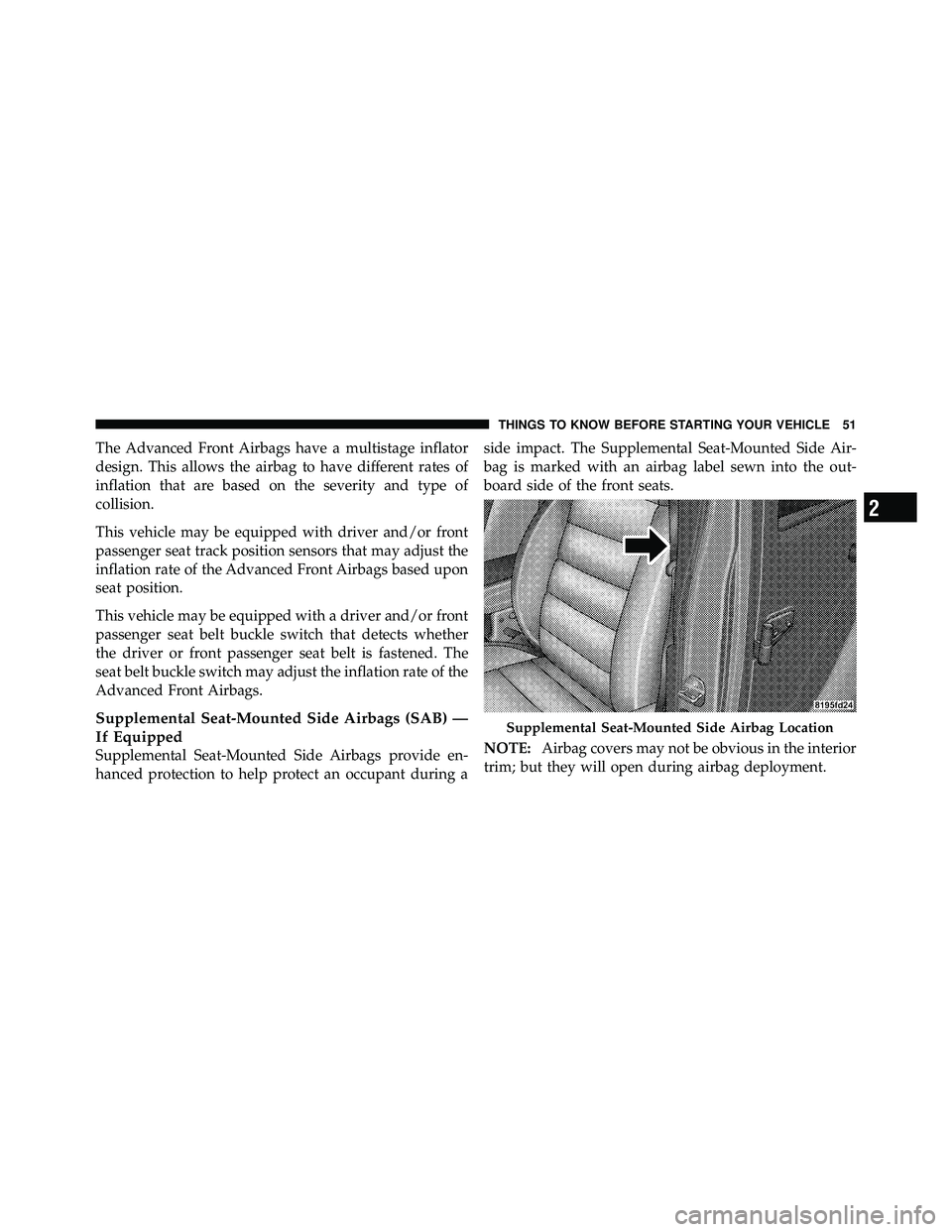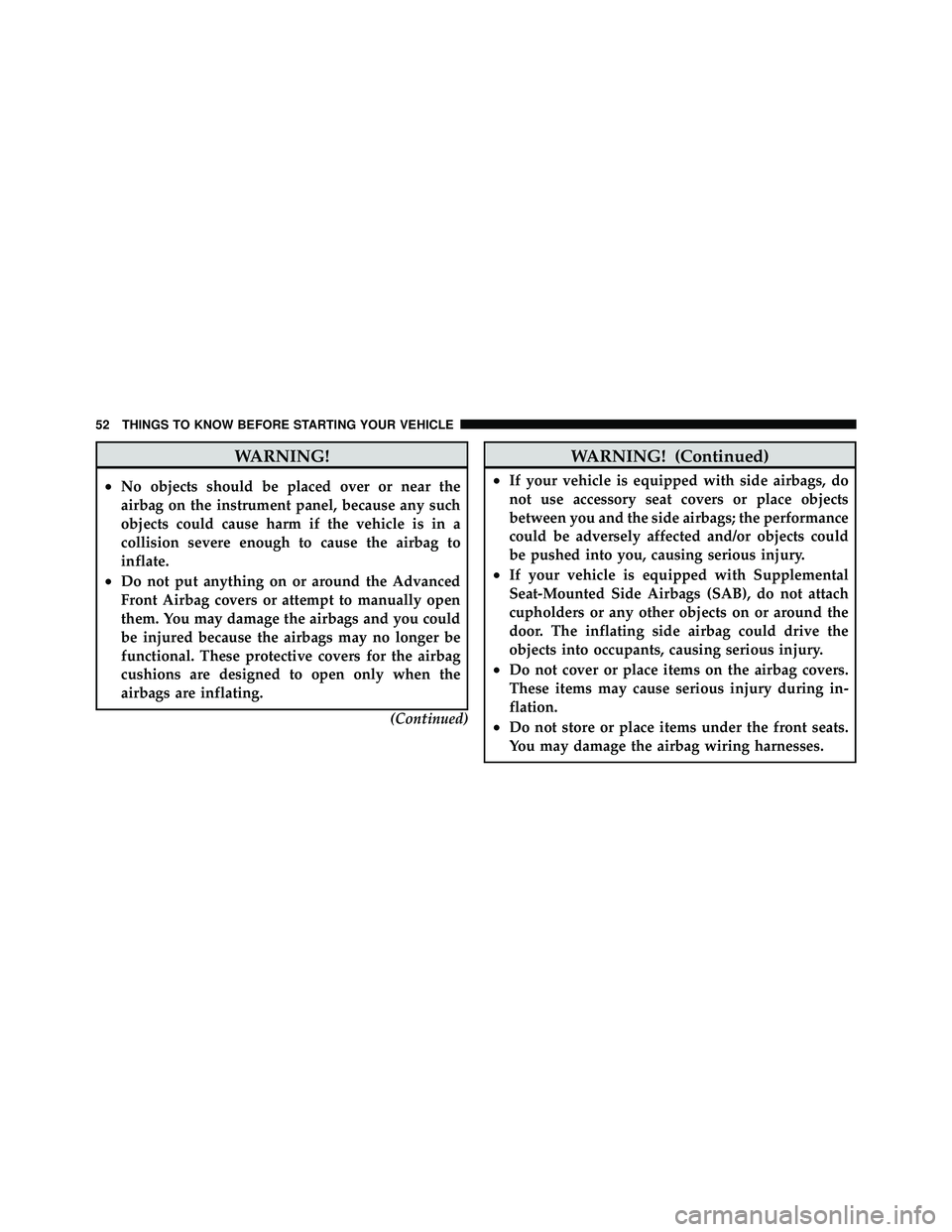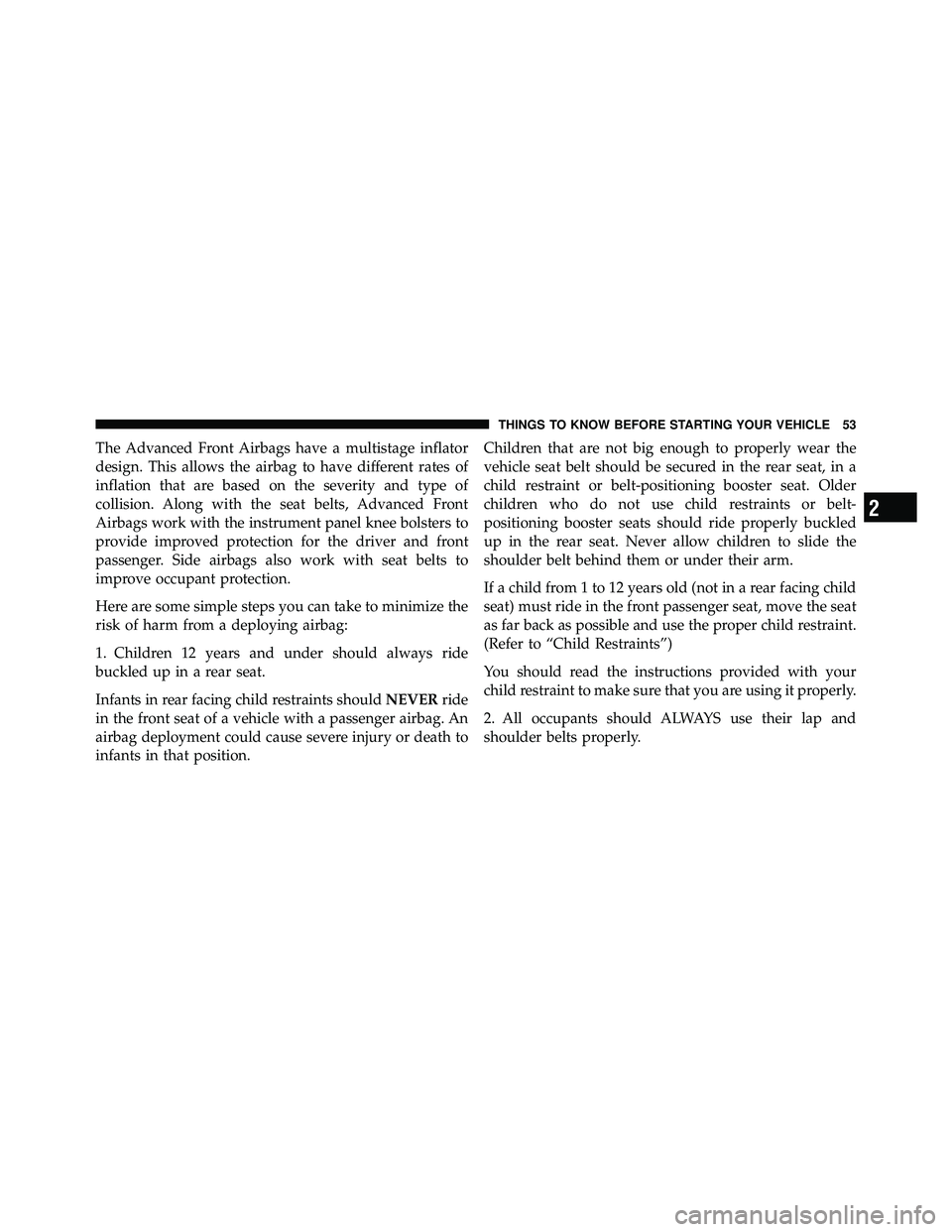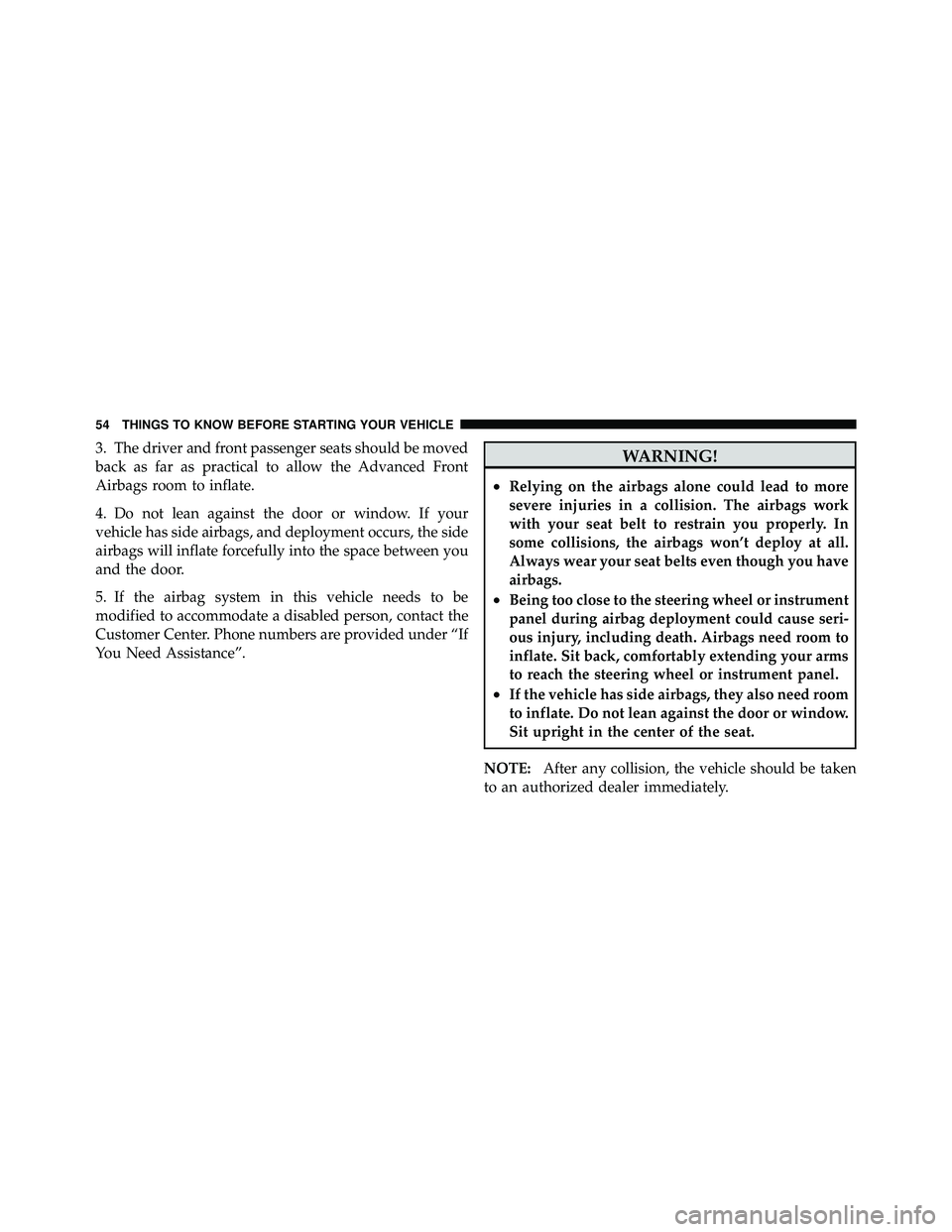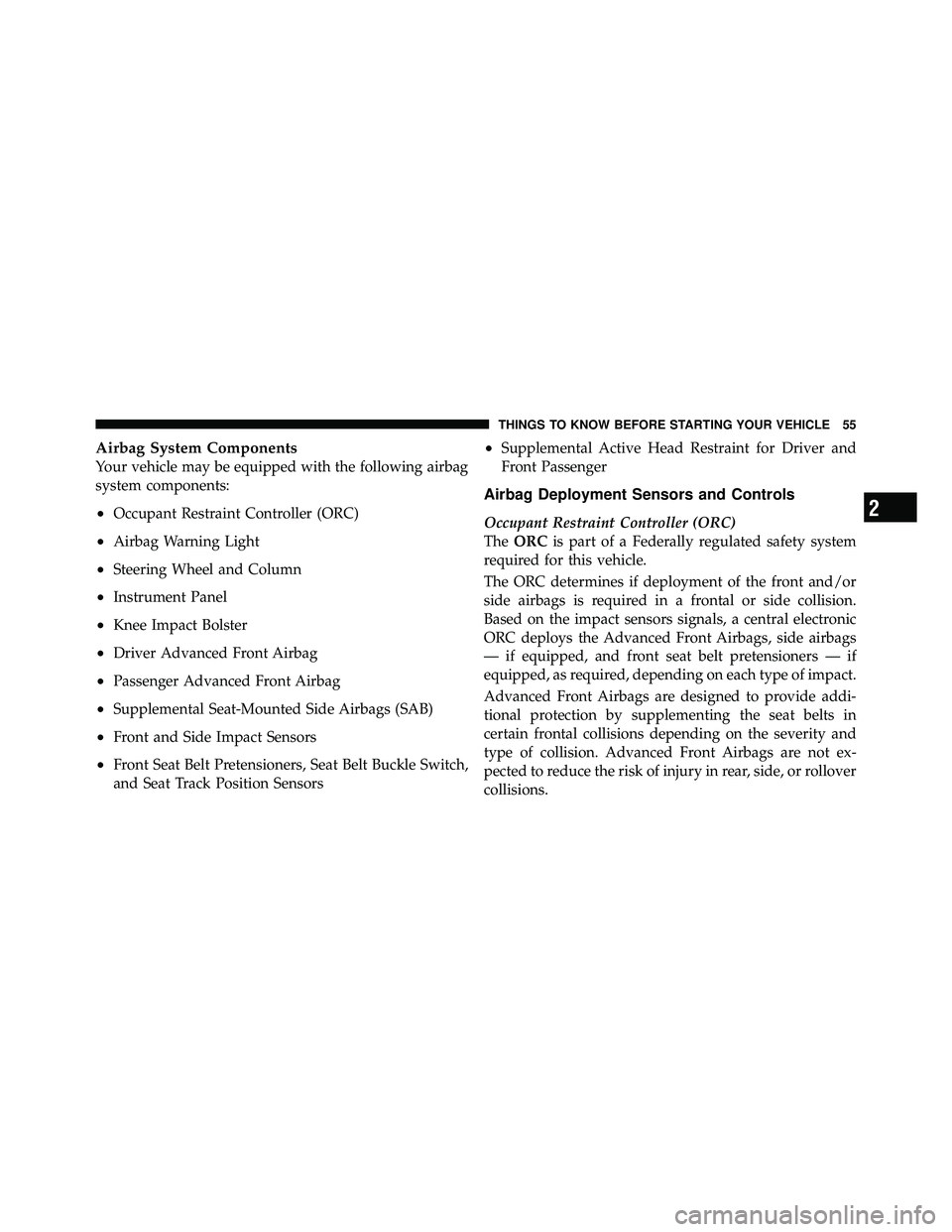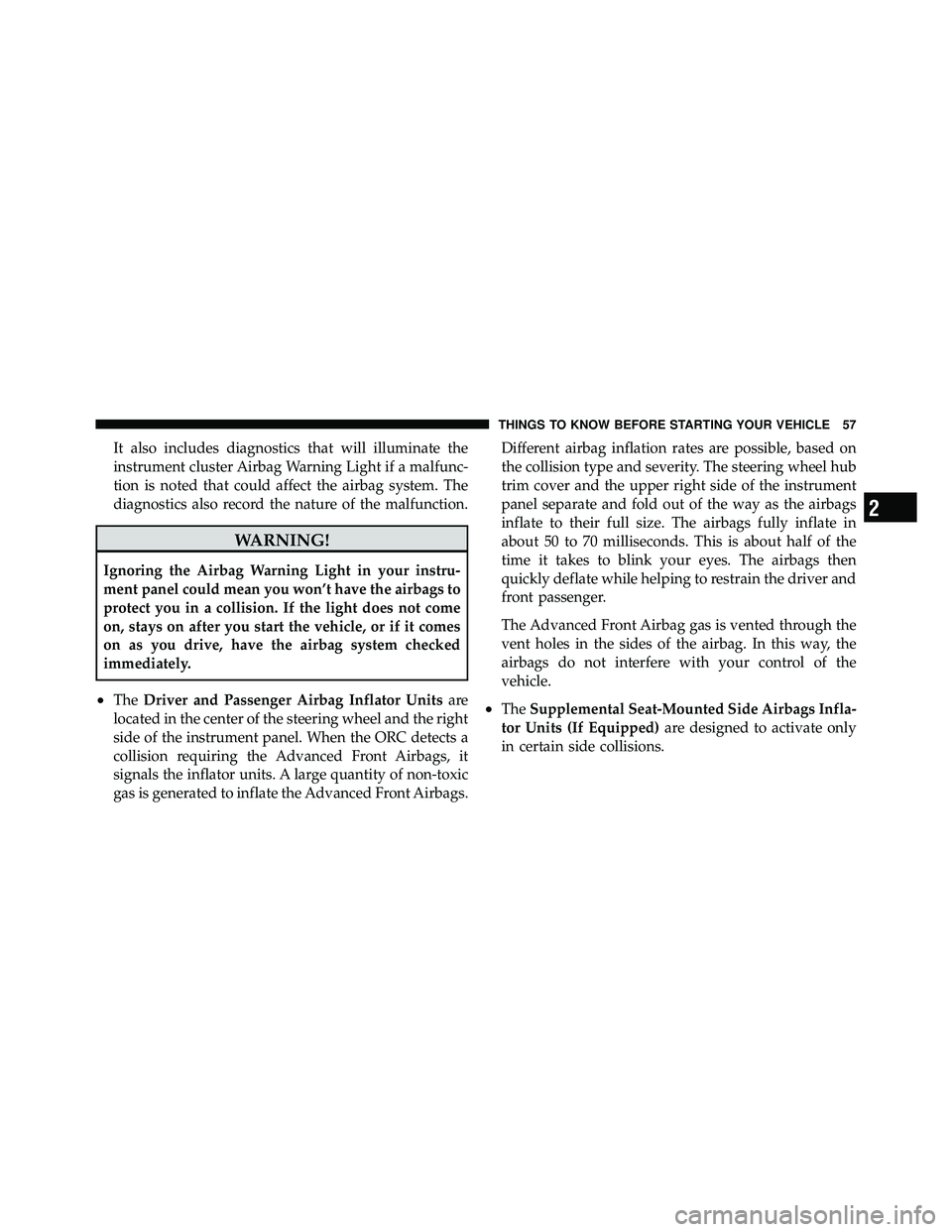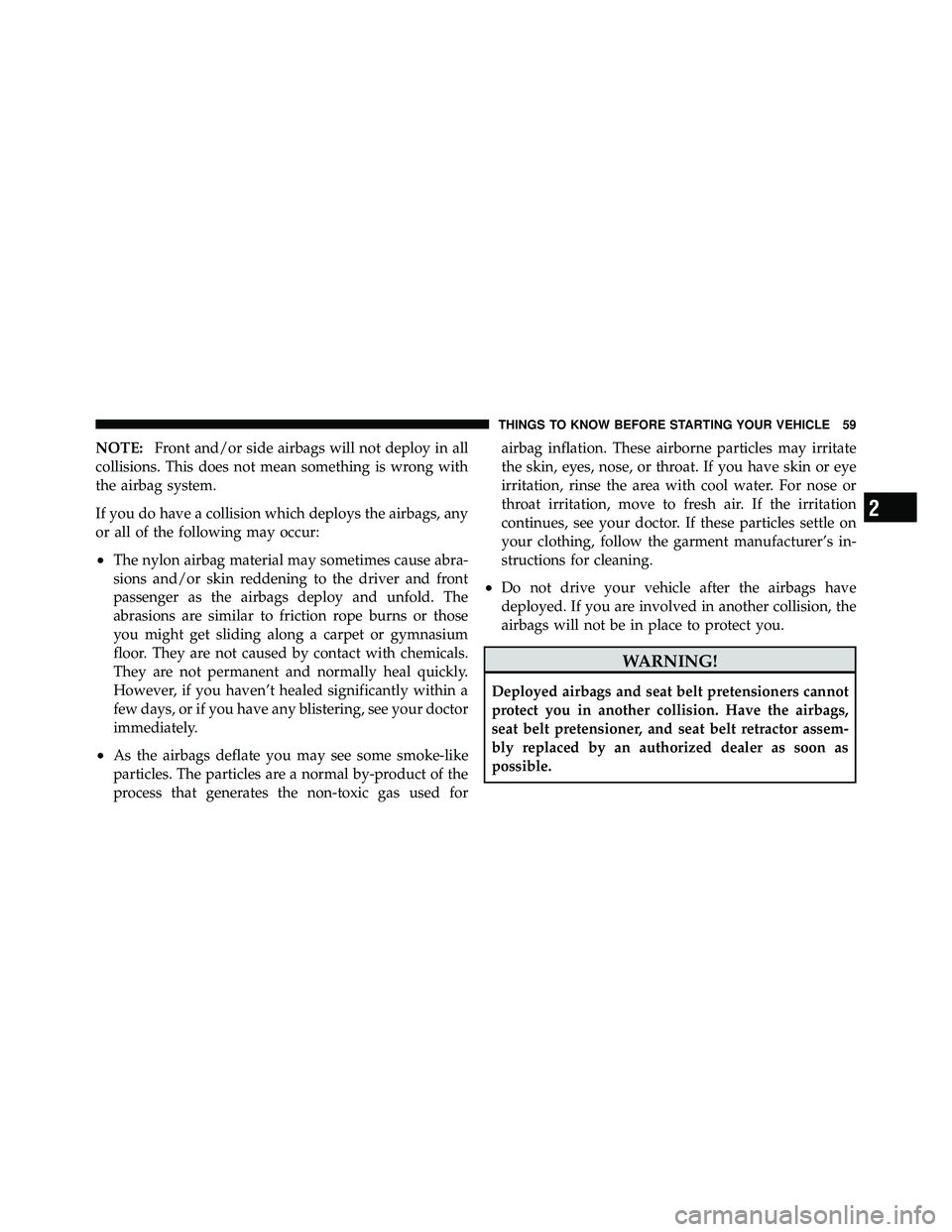JEEP WRANGLER 2010 Workshop Manual
WRANGLER 2010
JEEP
JEEP
https://www.carmanualsonline.info/img/16/56059/w960_56059-0.png
JEEP WRANGLER 2010 Workshop Manual
Trending: seats, trailer, change wheel, maintenance, charging, airbag, lane assist
Page 51 of 554
Supplemental Restraint System (SRS) — Airbags
This vehicle has Advanced Front Airbags for both the
driver and right front passenger as a supplement to the
seat belt restraint systems. The driver’s Advanced Front
Airbag is mounted in the steering wheel. The front
passenger airbag is mounted in the instrument panel,
above the glove compartment. The letters SRS are em-
bossed on the airbag covers.NOTE:These airbags are certified to the new Federal
regulations for Advanced Airbags.
Page 52 of 554
Page 53 of 554
WARNING!
•No objects should be placed over or near the
airbag on the instrument panel, because any such
objects could cause harm if the vehicle is in a
collision severe enough to cause the airbag to
inflate.
•Do not put anything on or around the Advanced
Front Airbag covers or attempt to manually open
them. You may damage the airbags and you could
be injured because the airbags may no longer be
functional. These protective covers for the airbag
cushions are designed to open only when the
airbags are inflating.(Continued)
Page 54 of 554
Page 55 of 554
3. The driver and front passenger seats should be moved
back as far as practical to allow the Advanced Front
Airbags room to inflate.
4. Do not lean against the door or window. If your
vehicle has side airbags, and deployment occurs, the side
airbags will inflate forcefully into the space between you
and the door.
5. If the airbag system in this vehicle needs to be
modified to accommodate a disabled person, contact the
Customer Center. Phone numbers are provided under “If
You Need Assistance”.
Page 56 of 554
Page 57 of 554
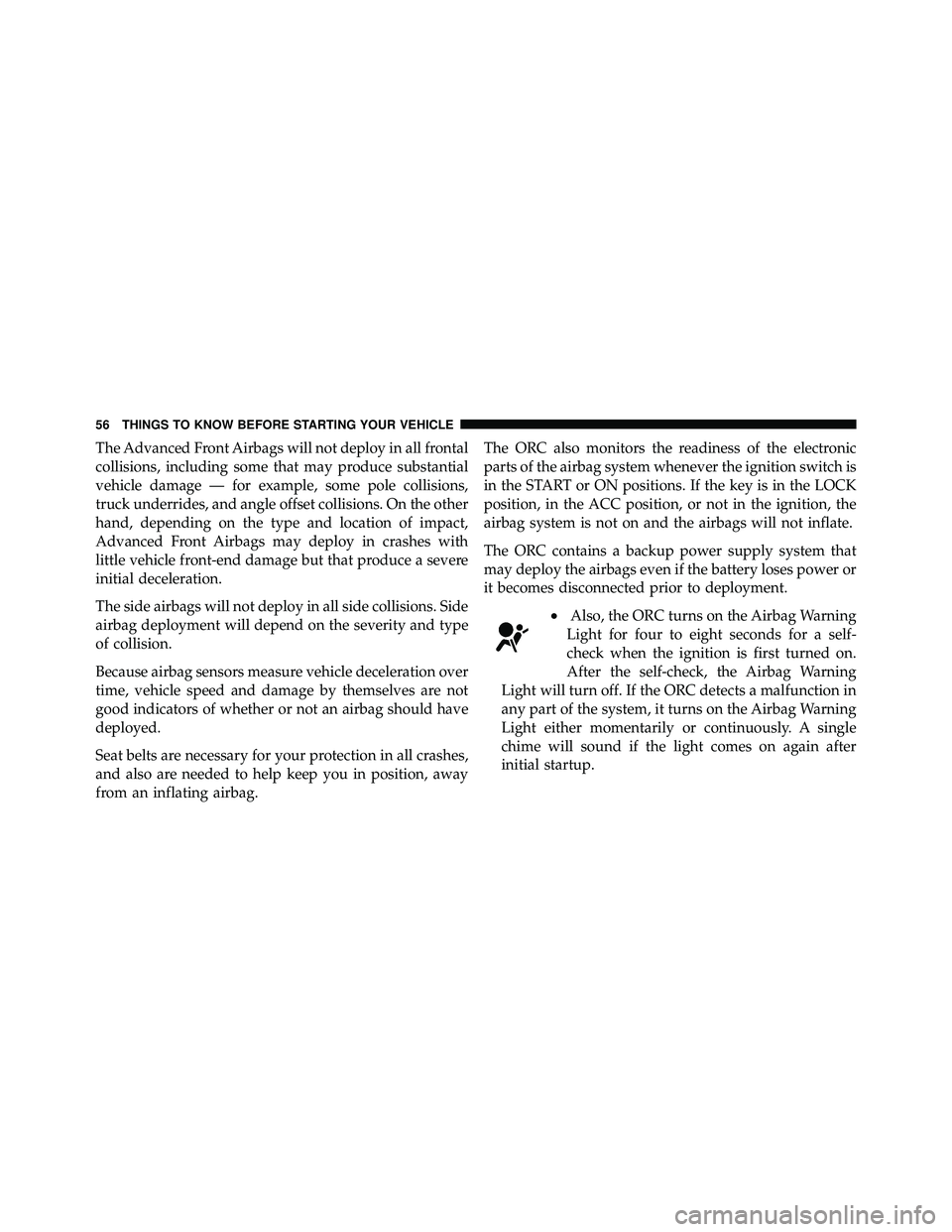
The Advanced Front Airbags will not deploy in all frontal
collisions, including some that may produce substantial
vehicle damage — for example, some pole collisions,
truck underrides, and angle offset collisions. On the other
hand, depending on the type and location of impact,
Advanced Front Airbags may deploy in crashes with
little vehicle front-end damage but that produce a severe
initial deceleration.
The side airbags will not deploy in all side collisions. Side
airbag deployment will depend on the severity and type
of collision.
Because airbag sensors measure vehicle deceleration over
time, vehicle speed and damage by themselves are not
good indicators of whether or not an airbag should have
deployed.
Seat belts are necessary for your protection in all crashes,
and also are needed to help keep you in position, away
from an inflating airbag.The ORC also monitors the readiness of the electronic
parts of the airbag system whenever the ignition switch is
in the START or ON positions. If the key is in the LOCK
position, in the ACC position, or not in the ignition, the
airbag system is not on and the airbags will not inflate.
The ORC contains a backup power supply system that
may deploy the airbags even if the battery loses power or
it becomes disconnected prior to deployment.
•Also, the ORC turns on the Airbag Warning
Light for four to eight seconds for a self-
check when the ignition is first turned on.
After the self-check, the Airbag Warning
Light will turn off. If the ORC detects a malfunction in
any part of the system, it turns on the Airbag Warning
Light either momentarily or continuously. A single
chime will sound if the light comes on again after
initial startup.
Page 58 of 554
Page 59 of 554
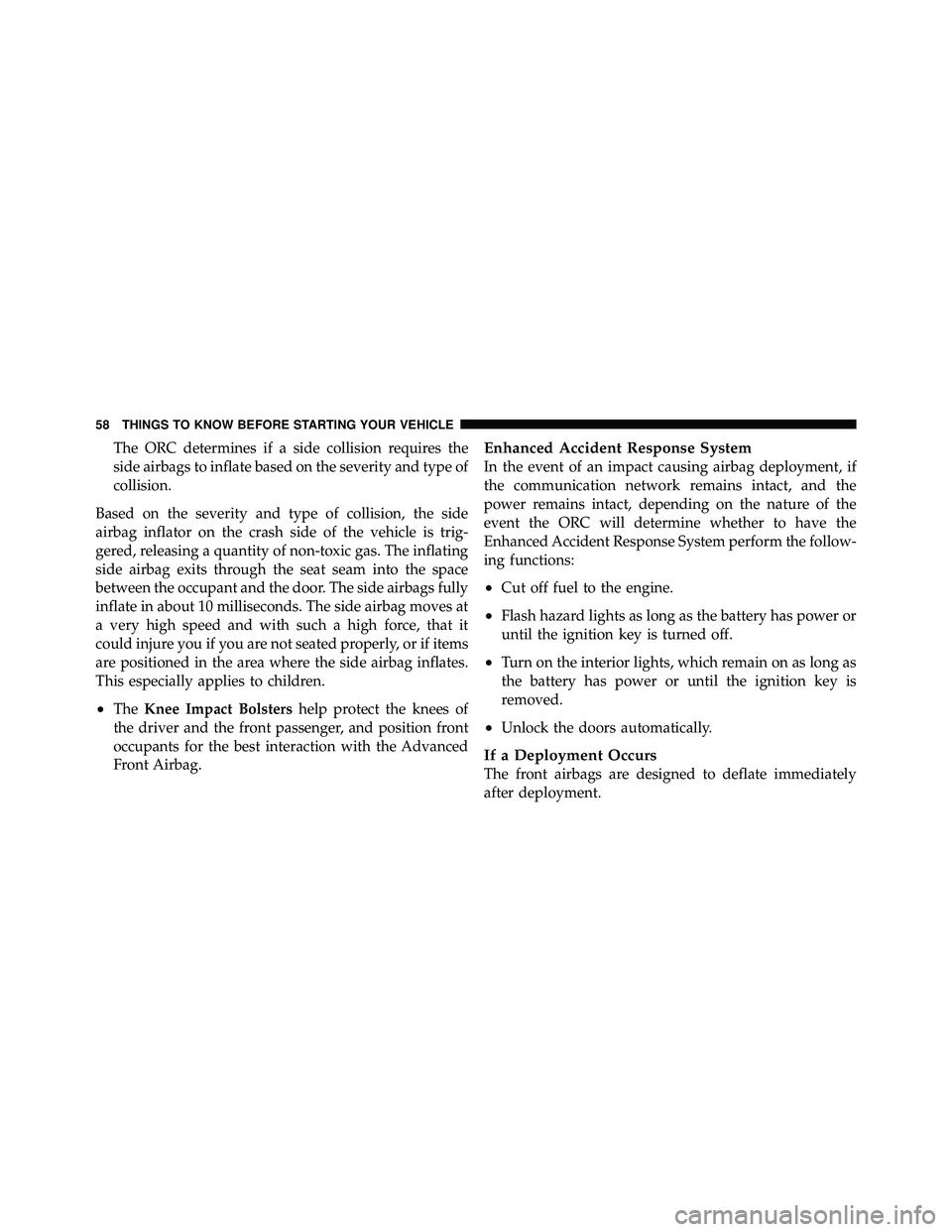
The ORC determines if a side collision requires the
side airbags to inflate based on the severity and type of
collision.
Based on the severity and type of collision, the side
airbag inflator on the crash side of the vehicle is trig-
gered, releasing a quantity of non-toxic gas. The inflating
side airbag exits through the seat seam into the space
between the occupant and the door. The side airbags fully
inflate in about 10 milliseconds. The side airbag moves at
a very high speed and with such a high force, that it
could injure you if you are not seated properly, or if items
are positioned in the area where the side airbag inflates.
This especially applies to children.
•The Knee Impact Bolsters help protect the knees of
the driver and the front passenger, and position front
occupants for the best interaction with the Advanced
Front Airbag.
Enhanced Accident Response System
In the event of an impact causing airbag deployment, if
the communication network remains intact, and the
power remains intact, depending on the nature of the
event the ORC will determine whether to have the
Enhanced Accident Response System perform the follow-
ing functions:
•Cut off fuel to the engine.
•Flash hazard lights as long as the battery has power or
until the ignition key is turned off.
•Turn on the interior lights, which remain on as long as
the battery has power or until the ignition key is
removed.
•Unlock the doors automatically.
If a Deployment Occurs
The front airbags are designed to deflate immediately
after deployment.
58 THINGS TO KNOW BEFORE STARTING YOUR VEHICLE
Page 60 of 554
Trending: battery, radio antenna, engine coolant, ESP, tire type, turn signal, check transmission fluid
